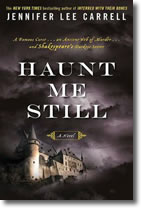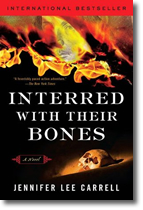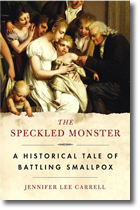The Three Witches by Henry Fuseli (1783)
Kunsthaus, Zurich
Specific rituals are thought to counter the evil, most famously going out of the room, turning three times counterclockwise before knocking to ask for re-entry, and then quoting a lucky bit of Shakespeare, often “Fair thoughts and happy hours attend on you!” from The Merchant of Venice.
She glanced down with a self-deprecatory smile. When she raised her eyes again, though, they were dark with worry. “I sometimes wonder whether the curse is clinging to me.”
I frowned. In the theater, the spiraling evil of Shakespeare’s witch-haunted tragedy is held to be so strong that it cannot be contained by the frail walls of the stage but spills over into reality…
Anthropologically, I found it intriguing. Practically, I found it absurd and even irritating. “I’m sorry. I can’t believe that.”
“No.” She sighed. “Nor do I, most of the time.”
—Haunt Me Still
The evil is said to stem from the play’s earliest performances, though the tales vary. According to one, the boy actor who was to play Lady M at the premiere in 1606 died in mysterious circumstances the night before opening. (All women on the English Renaissance stage were played by boys or men.) What is clear is that the Scottish Play did something new, dark, and disturbing with witchcraft on the stage.
To find out more, see The Scottish Play (Wikipedia).
Better yet, read Haunt Me Still.
- Marjorie Garber, “Macbeth: The Male Medusa,” in Shakespeare’s Ghost Writers: Literature as Uncanny Causality (New York: Methuen, 1987): 88-91.
- Richard Huggett, “The Curse of Macbeth: Its Origin, Background, and History,” in Supernatural on Stage: Ghosts and Superstitions of the Theatre (New York: Taplinger, 1975): 153-211.








